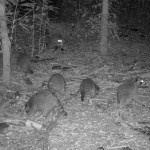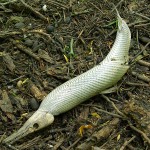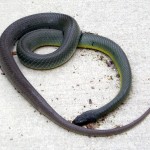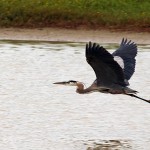Lemmon Lake could not stand against the long hot Texas summer this year. The brutal heat completely evaporated this small lake in the Joppa Preserve over just a matter of weeks. Left behind was a long, barren mud flat that soon became crisscrossed with a menagerie-representing collection of animal tracks. Feral Hogs, Bobcats, Coyotes, Skunks, Armadillos, Raccoon, and various wading birds all left their marks.
I was keenly interested in monitoring the drying of this lake for a number of reasons. Of these, having a look at what lay under the water was near the top of my list. When I got word that the water was finally gone, I rushed out to have a look.
The biggest surprise for me, though, was how few surprises there were to be found on the lake bed after the water vacated. It was mostly just as I described earlier—a long, flat expanse of sun baked mud. Other than the animals tracks, there was not much of note to be found on the lake bottom.
So, what was I expecting to find? I can’t really say. Mostly discarded bottles and other forms of litter, I suppose. Maybe the carcasses of stranded fish (these were certainly quickly consumed by the lake’s resident predators). Possibly some other kind of sunken treasure, loosely-defined . I certainly expected to find something of interest.
As it turns out, the Great Blue Heron carcass in the photographs below is the most notable thing I discovered. The remains of this bird were found near the center of the lake in a place where the grass was just beginning to grow. Bones and feathers were scattered about in a roughly room-sized area.
The mystery to be solved is, just how did this bird meet its demise? Did he let his guard down just a little too close to the tall reeds along the lake bed’s margin? Great Blue Herons are big birds. It takes a little time for them to build the momentum they need to get airborne. Maybe a quick Bobcat or Coyote managed to snatch this one before he attained a safe altitude.
Whatever the case, it would have been fascinating to witness.



Observations Details
| County | – | Dallas |
|
| City | – | Dallas | |
| Date | – | Aug 5, 2012 | |
| Time of Day | – | Dusk | |
| Temperature | – | Hot (greater than 89°F/32°C) | |
| Weather | – | Partly Cloudy | |
| Habitat | – | Recreation-Park | |
| Type of Behavior | – | Death | |
| Gender | – | Uncertain | |
| Maturity | – | Adult | |
| Observer | – | Chris Jackson |







Wow! Great shot of the skull with that extraordinary beak. It’s always strange to find dead animals, isn’t it. Considering how many there are around us, they hide their deaths well. Great blues are so big it seems like a predator would have to be pretty hungry to bother tussling with that beak. Maybe the heron was ill or injured already. Interesting post.